Banana trees will thrive ready for spring growth if they are cut back in winter. Prepare the banana tree for winter by removing extra stems, removing old and damaged leaves and clearing up around the base. Allow the tree to focus its energy on 3 main stems to grow new bunches of bananas.
Remove the old stems that have already grown banana bunches as these will not grow new ones the next year. Cut the stem at an angle to make sure that winter rain can run off and will not cause rot.
This article will explore all you need know to prepare your banana tree for winter. Take these actions in fall before the winter weather hits and your banana tree will thrive in spring.
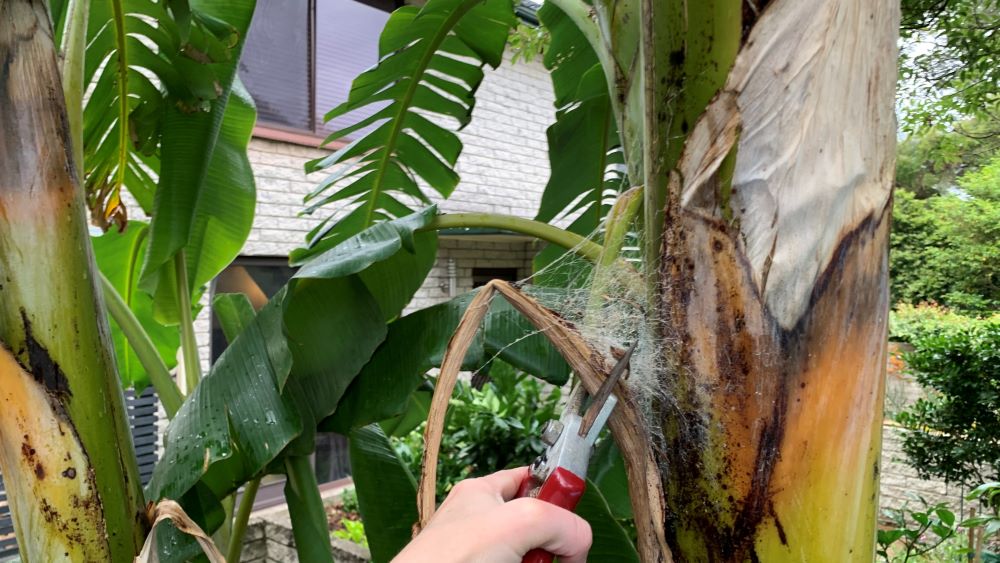
Top 8 tips to prepare a banana tree for winter
The best time of year to prepare your banana tree for a cold winter is towards the end of fall. Before the weather turns cold and any frosts arrive you should take some simple steps to prepare your tree. Check out my top 8 tips to prepare your banana tree for winter
1. Remove extra stems – Maintain 3-4 stems
Early fall is the best time to focus on the healthy stems on the banana tree that will grow fruit in the next summer. Before winter arrives remove the extra tree stems that have already grown fruit or are too small. Allow the tree to focus its energy on 3-4 main stems.
Allow the tree to grow 3 or 4 main stems so that it has enough energy to grow the full flower and to grow healthy fruit. If you are growing your banana tree as a feature rather than to grow fruit you can let as many stems as you like grow.
It is best to remove any damaged stems before winter so that they don’t rot and fall over when the rains arrive.
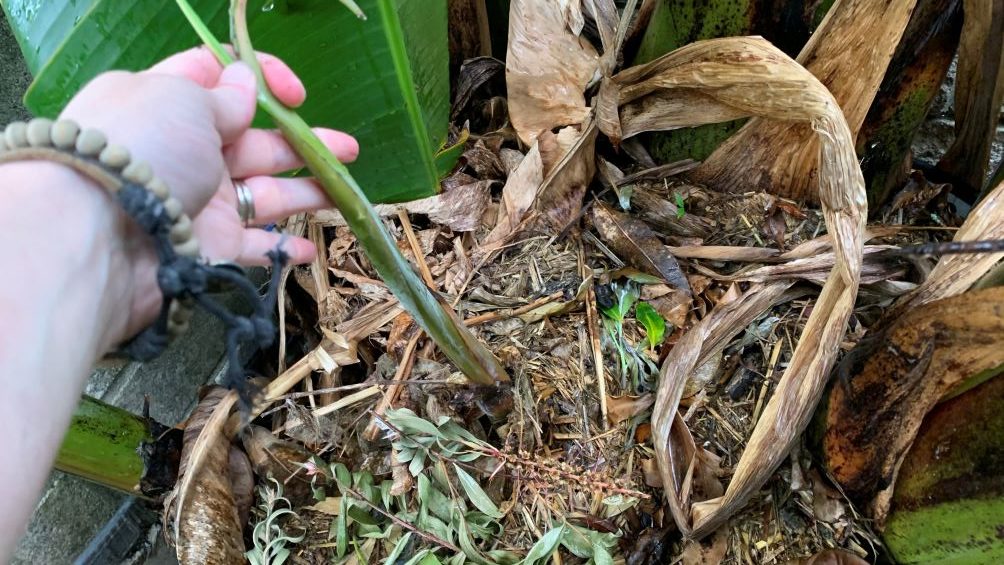
2. Cut at an angle so the water can run off
When removing extra banana tree stems it is important to cut them at an angle to avoid the winter rain pooling in the base. Using a pruning saw cut the banana stem around 3-4 inches away from the ground on a 30-45 degree angle.
Do this in fall when the weather is cool and the banana stem will heal over by the time winter arrives.
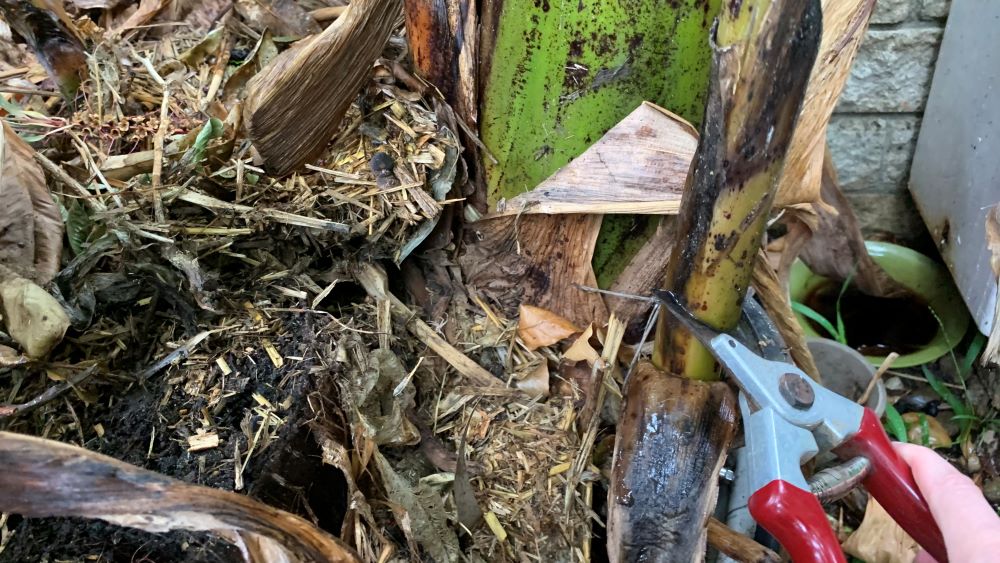
3. Watch out for the sap
When cutting banana stems or leaves it is important to wear long sleeves and gloves. Wear old clothes because the sap can stain your clothes if it get on you when you are cutting. After you cut a main stem or leaf a white or clear substance will come out and contain the sticky sap.
Wash your hands and garden equipment straight after pruning banana trees. Wash secateurs or your pruning saw in warm soapy water and spray it after with oil to protect the equipment from rust.
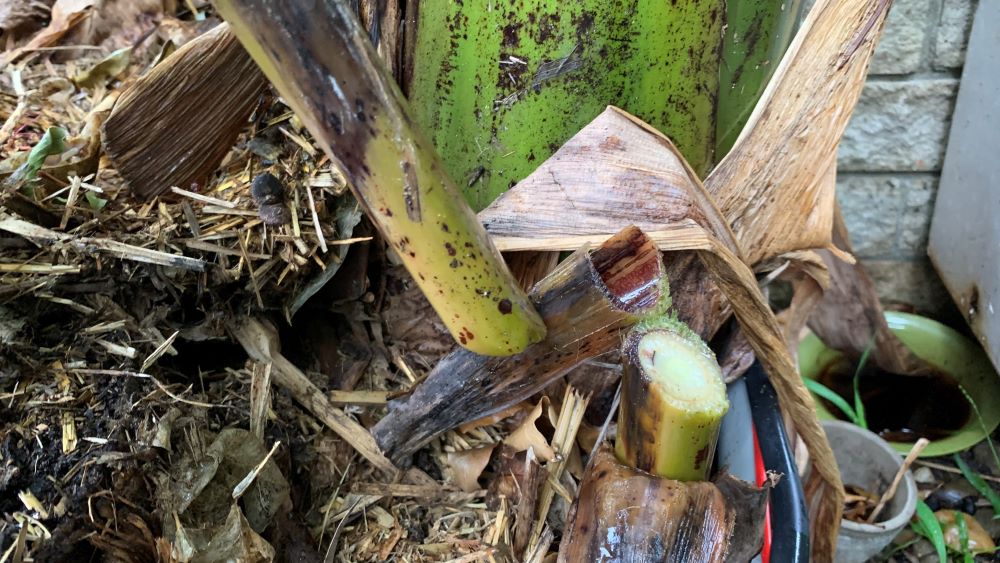
4. Remove old and damaged leaves
Before winter arrives prepare your banana tree by removing old, damaged leaves. Using secateurs trim off leaf stems close to the trunk of the tree that have turned brown or yellow. Old leaves near the base of the tree can be removed as they will not recover.
This will neaten up the tree and keep it looking tidy over the winter months. Banana trees will slow their growth over winter so I like to leave it with healthy green leaves so it looks neat.
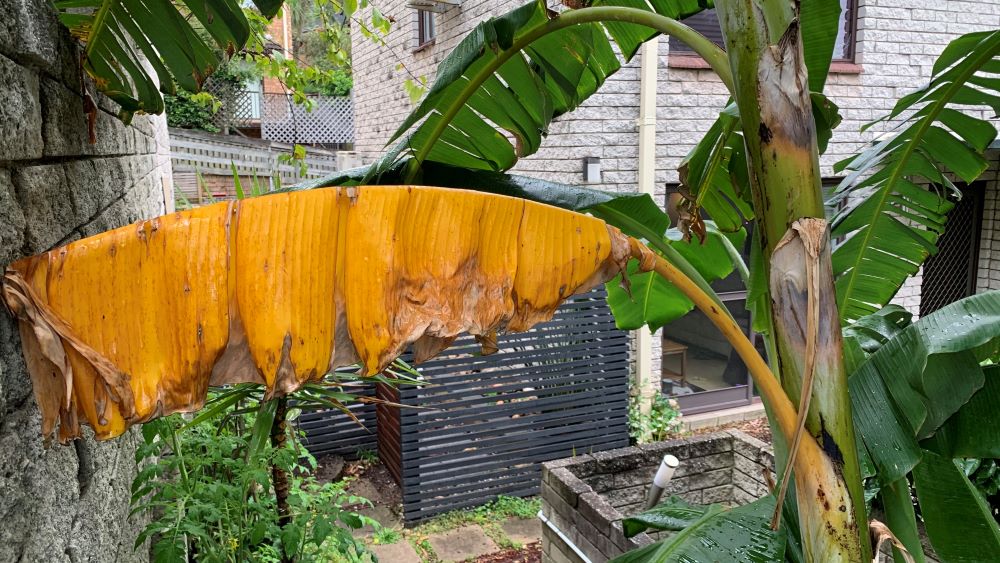
5. Clear up around the base
Before winter arrives it is a good idea to clear up any damaged or old leaves that have fallen off and gathered at the base of the tree. Pull back any old leaves that are near the trunk and remove any rotting leaves or bark.
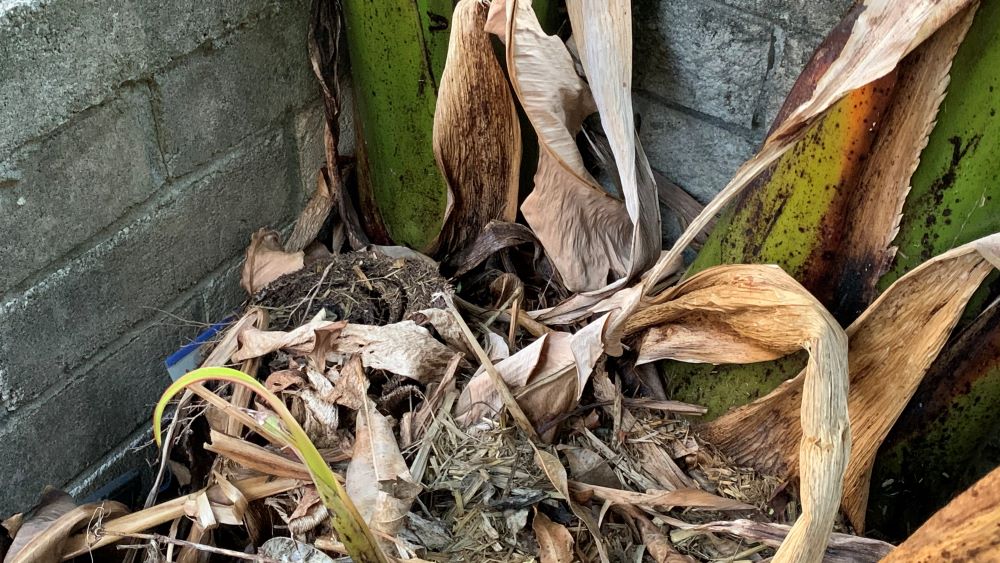
6. Take off small shoots
Fall is a great time to remove any small shoots that are coming from the base of the banana tree. Snip them off using sharp secateurs of they are small or use a pruning saw if they are more than an inch across.
These small shoots can be left if you want a dense tree but if you are looking for fruit make sure you focus on 3 large stems instead.
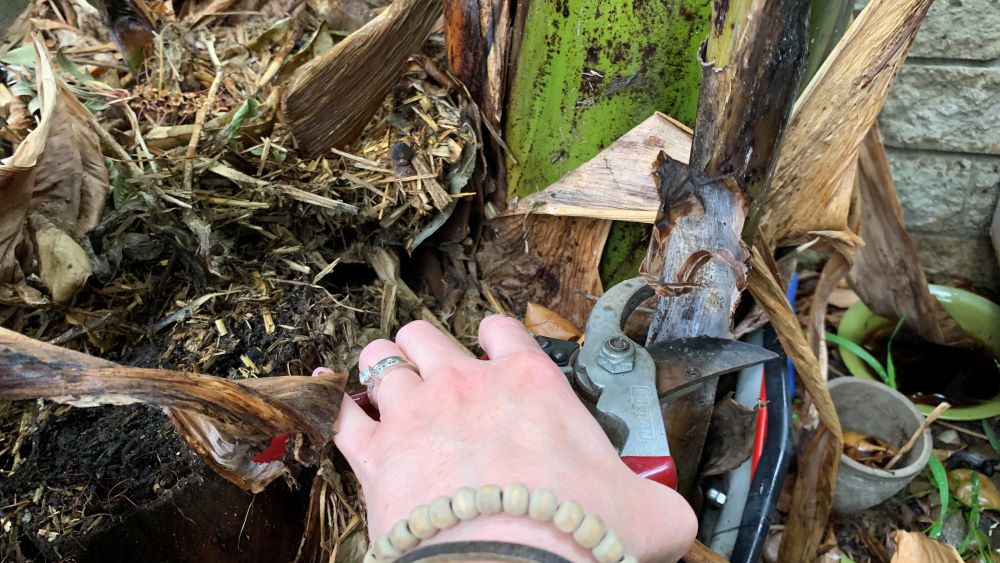
7. Mulch around the plant
Adding mulch around the plant to protect the roots for winter is a great idea particularly if you have the chance of frost. Use fall leaves, straw or sugar cane mulch and sprinkle it around the base of the banana tree. This will slowly break down but will protect the banana roots and gently feed the plant over time.
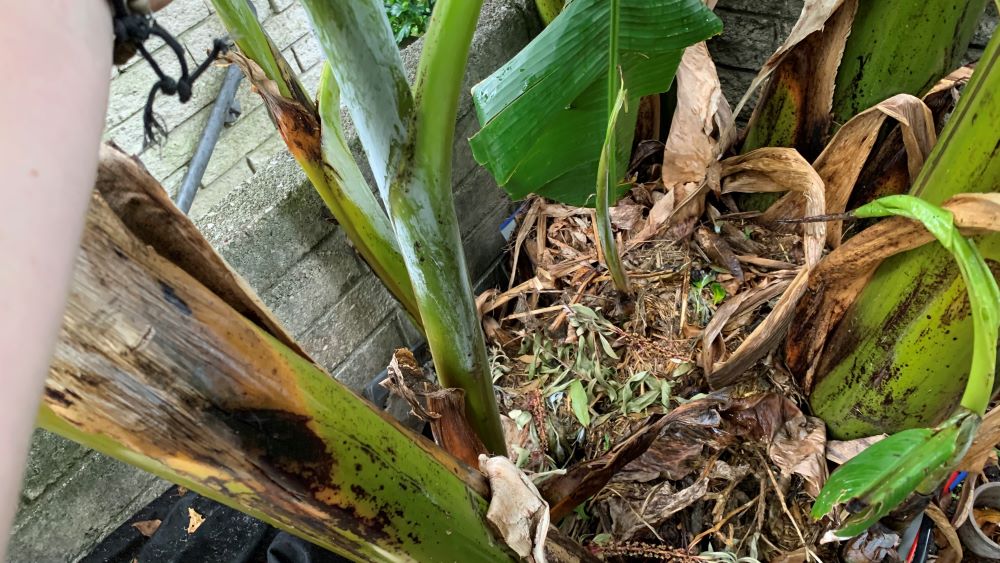
8. Fertilize in fall
It is important to fertilize banana trees before winter. Banana trees love an organic fertilizer like pelleted chicken manure so add a few handfuls at the base in fall. Preparing the banana tree with good organic fertilizer will give you strong roots to survive a cold winter.
Your plant will also be prepare and ready to grow rapidly in spring. Organic fertilizers made from animal manures are my favorite as they contain a range of nutrients as well as organic material.
How to cut back banana trees for winter | Summary
Banana trees can thrive over winter getting ready to add brand new leaves and flowers in spring and summer. I like to prepare my banana tree for slow growth over winter by removing extra leaves, particularly damaged ones. This keeps it looking neat over winter.
Banana trees are generally low maintenance but if you want fruit you will need to remove extra stems to allow the tree to focus on 3-4 main stems. Banana trees will grow slowly over winter but in spring they will grow new leaves and height rapidly. They can even grow up to 2-3 feet in height in spring with lots of new leaves appearing in a few weeks.
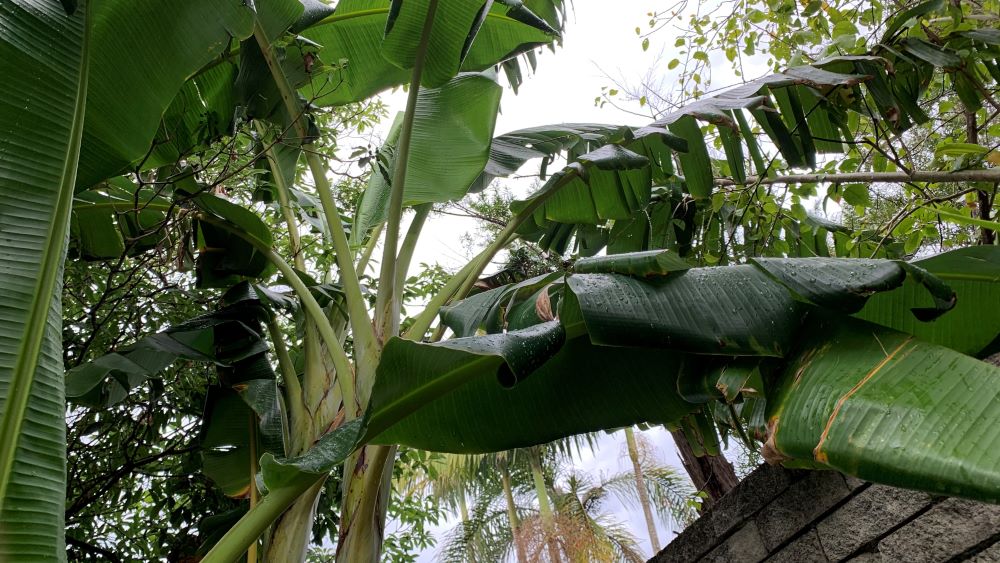
Banana trees are fun to grow and if you live in a tropical or sub-tropical region. They add beautiful bright green tropical look to your garden and are low maintenance. If you don’t mind trimming leaves and stems a banana tree is a great addition to your yard.
I am an accredited practicing dietitian, experienced gardener and a dedicated cook. I love writing and sharing my experience so you can learn from my successes and mistakes.
